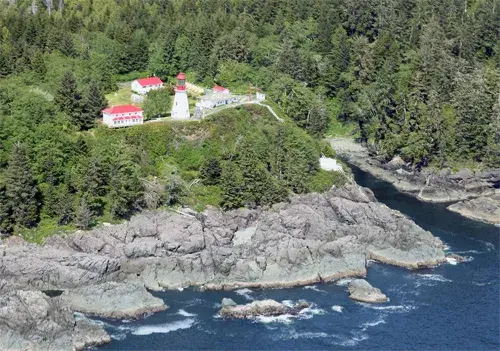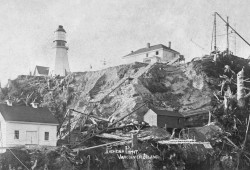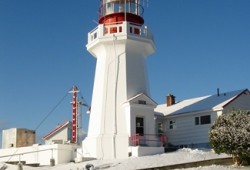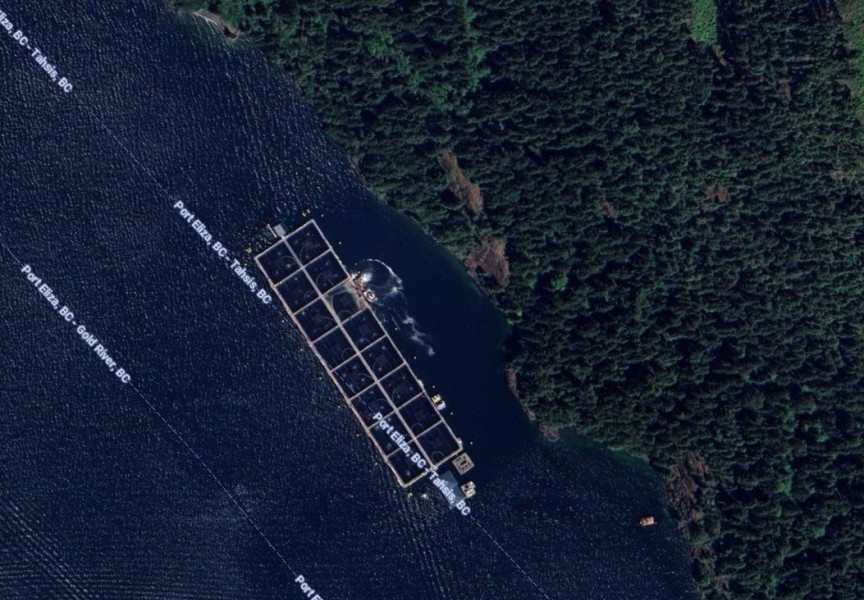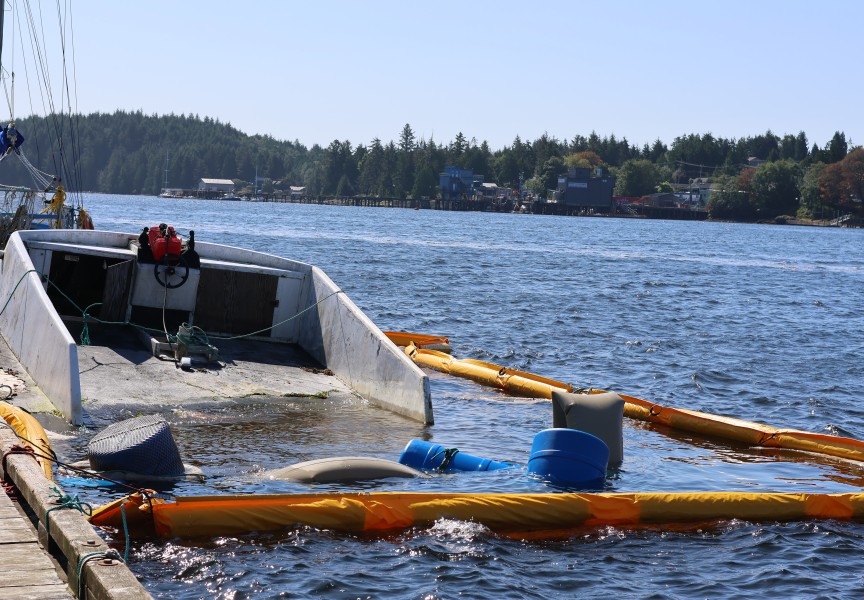Manned lighthouses on Vancouver Island are becoming a thing of the past and that is raising alarm among the seafaring people of the remote west coast communities.
The Canadian Coast Guard and the federal government announced in July that lighthouses at Pachena Point and Carmanah Point would no longer have keepers as of Friday, Oct. 25 due to seismic concerns. While the Coast Guard acknowledged the facilities’ role in alerting mariners to hazards, the safety of lighthouse personnel “is the highest priority”.
“A geotechnical investigation and geological hazard assessment found that many of the buildings at both Carmanah Point and Pachena Point light stations are within an area of increased vulnerability,” stated the Coast Guard in a July 31 announcement. “The soil conditions mean that some facilities are no longer safe to use. While the Canadian Coast Guard is working with Fisheries and Oceans Canada to investigate long-term options for the sites, the priority is to ensure the safety of the light keepers, who will be moved out of the buildings before the winter weather creates additional challenges.”
The federal agency went on to say that the winch building and helipad at Carmanah have been condemned.
“The instability of the land under the stations also increases the risk of a slope failure in the event of a large earthquake,” stated the Coast Guard.
NDP Fisheries and Oceans critic Lisa Marie Baron stated that the Liberal government de-staffed the two Vancouver Island lighthouses without consultation.
“This jeopardizes emergency response, search and rescue, navigation and more,” she wrote in a statement released by the NDP on October 24.
There are five lighthouses on the outer coast of Vancouver Island in Nuu-chah-nulth territories. They are the Nootka Lighthouse at Yuquot, Lennard Island Lighthouse in Tla-o-qui-aht territory, while Amphitrite Point is on the rocky shores of Yuułuʔiłʔatḥ territory.
The last two staffed lighthouses on Vancouver Island in Nuu-chah-nulth territories were the Carmanah Point Light station near Ditidaht’s Clo-oose, and Pachena Point located near Anacla and Bamfield. Both of these lighthouses are on the lifesaving West Coast Trail.
There is a stretch of coastline called the Graveyard of the Pacific that spans from Tillamook Bay in Oregon, covering the shores up to Cape Scott on the northern tip of Vancouver Island. Storms, fog, shifting sand bars, tidal rips, rocky rugged coastline all contribute to the hazards. Hundreds, if not thousands of lives have been lost over 200 years on this rocky, storm-swept section of shoreline.
The loss of lives along the coast prompted the federal government to build the lifesaving West Coast Trail in 1907. According to Parks Canada, the 75-kilometre trail is part of the ancient paths and paddling routes used for trade and travel by First Nations. Huu-ay-aht, Ditidaht, and Pacheedaht villages and camps were well established along the route before the foreign sailing ships started to arrive off this coast over 200 years ago.
But the improvements in navigational equipment and communications along the coast made the trail’s purpose obsolete, according to Parks Canada, and in 1970 the trail became a recreational hiking route as part of the Pacific Rim National Park Reserve. Each year, more than 7,500 hikers use the trail and many have relied on the lighthouse keepers for assistance.
Lighthouse keepers along west coast of Vancouver Island provided a human connection and a sense of security for anyone stranded along the way.
In a Google review, Mowachaht/Muchalaht member Wayne Lavoie wrote of Nootka Lighthouse, “I fish Nootka Lighthouse all year and its crew keeps all of the fishermen safe with its up-to-date weather forecasts.”
His review was written in 2021, when the lighthouse keepers were still there.
“Instead of supporting lightkeepers and the safety of our communities, the Liberals are choosing automated navigation systems. These cannot replace skilled people and don’t hear distress cries,” Baron stated, adding that the move is dangerous and she urged the Liberal government to halt their plan to cut staff.
But the plan went forward and staff from the lighthouse stations at Pachena Point and Carmanah Point began moving equipment out in early November.
According to the New Democrats, local communities, First Nations, as well as lightkeeper staff and their union have all called on the Liberals to freeze their plan because of the negative impacts on navigation, search and rescue, and emergency response operations. Community stakeholders have also raised concerns about a lack of adequate consultation prior to taking the action to de-staff the stations.
According to information posted on Lighthouse Friends, construction on the Pachena Point Lighthouse began following one of the worst maritime disasters in modern history. On January 22, 1906, dozens of lives were lost with the sinking of the passenger ship Valencia.
The ship, Lighthouse Friends wrote, broke up on the rocks in the early morning hours as passengers in their nightclothes scrambled onto the deck. Of the 160 people aboard the Valencia, 133 lives were lost. No women or children survived.
In the wake of the disaster, the federal government built the lighthouse at Pachena Point and began construction on the lifesaving West Coast Trail, which spans the rugged west coast of Vancouver Island from Port Renfrew to Bamfield, encompassing the Nuu-chah-nulth territories of the Huu-ay-aht, Ditidaht and Pacheedaht.
For more than a century, lighthouse keepers kept watch over the passing mariners, providing aid to those in need.
Lighthouse Friends points to veteran lighthouse keeper Jerry Etzkorn, who served for more than 25 years at Carmanah Lighthouse. They said he helped countless adventurers with drinking water, alerts on local hazards, and first aid including broken bones, hypothermia and a cougar-attack. The facility even once assisted a spooked hiker who crawled out of his tent to discover a dead body on the beach.
“Just a part of daily life at Carmanah Point,” according to Lighthouse Friends.
MP Gord Johns has been hearing from the locals and is bringing their concerns to Ottawa. Citing the increasing volume of freighter traffic on the coast, with two major spills in recent times and bigger storms on the west coast thanks to climate change, Johns stresses that a human presence along the remote coastline is more important than ever.
“They (Liberal government) claim that automation will work, but we have a huge coastline and lives are at risk – it’s just irresponsible,” said Johns.
Rather than making a plan to fix the issues at the lighthouses, the government removed the lighthouse keepers, putting all the risk on coastal peoples.
“They’re saying we don’t matter,” said Johns.
Huu-ay-aht First Nations Chief Councillor John Jack is on the board chair of the Alberni-Clayoquot Regional District (ACRD). He is on record expressing his concern to the ACRD that the move to de-staff the lighthouse was made without consultation with Huu-ay-aht.
The ACRD is opposed to de-staffing the lighthouses and they are taking their concerns to the DFO and the Canadian Coast Guard.
Johns accused the government of abandoning coastal communities, citing a long list of cancellations of coastline protections.
“In recent months, the Liberals have stopped funding key ocean protections, and allowed harmful projects to continue,” said Johns. “Recently, the Liberals cut the ghost and derelict fishing gear clean up fund, closed lighthouses, cut funding to deal with invasive green crab, and are still allowing a massive ship to be dismantled in a sensitive ecosystem. And this is only a snapshot of all their failures for coastal communities.”
“The Canadian Coast Guard is working with other departments and stakeholders, who also use the two sites for non-Canadian Coast Guard related purposes, to plan next steps,” noted the Coast Guard. “Long-term options, which include the cost of stabilizing the two sites or moving the highest risk buildings to safer ground, are being assessed. However, those options are expected to be complex and could be cost-prohibitive.”

